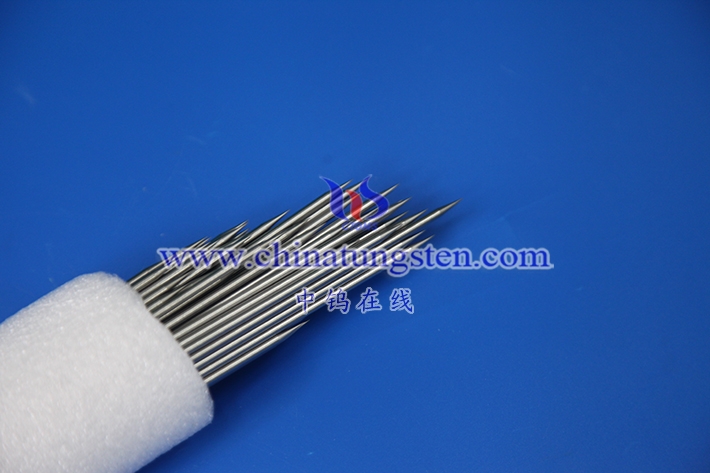Tungsten needles can be made in a variety of shapes and sizes, depending on the specific application. Some common shapes of tungsten needles include:
Straight needles: Straight tungsten needles are the simplest and most common shape of tungsten needles. They are used in a variety of applications, including microscale mechanics, electronics, and optics.
Conical needles: Conical tungsten needles have a conical or tapered shape and are often used in microscale electronics and mechanics to make precise electrical contacts or to probe microscale structures.
Pyramidal needles: Pyramidal tungsten needles have a pyramid-shaped tip and are often used in microscale mechanical testing to measure the strength and hardness of materials.

Chisel needles: Chisel tungsten needles have a flat tip that is perpendicular to the needle shaft. They are often used in tribology experiments to study friction and wear at the microscale.
Ball-point needles: Ball-point tungsten needles have a rounded, ball-shaped tip and are often used in microscale biosensing applications to detect and analyze biological molecules.
Blade needles: Blade tungsten needles have a flat, rectangular-shaped tip that is ideal for making precise cuts or incisions in materials.
Hook needles: Hook tungsten needles have a curved or bent tip and are often used in microscale particle manipulation to pick up and move microscale particles.
Overall, the shape of a tungsten needle depends on the specific application and the desired properties, such as sharpness, precision, and durability.






